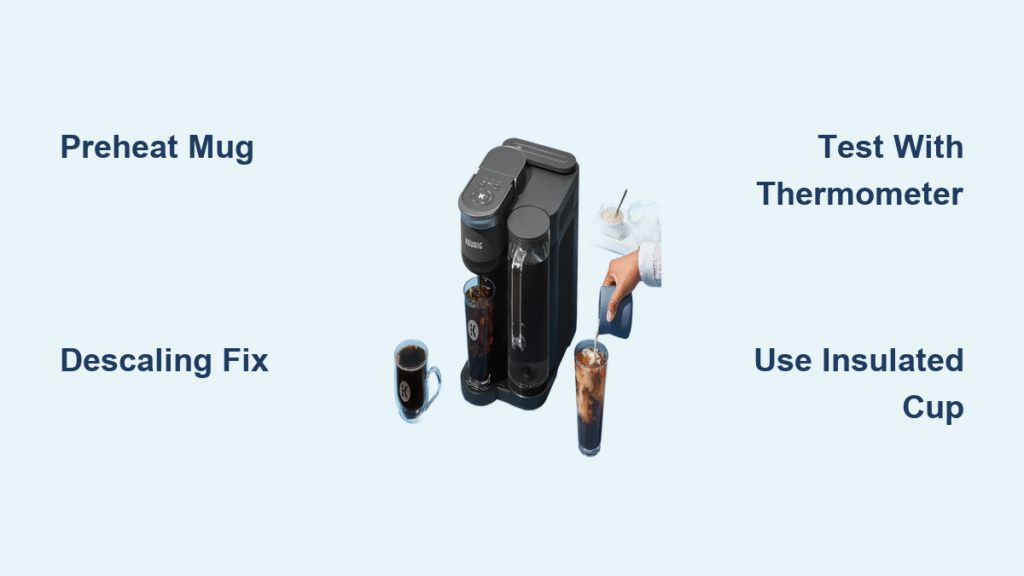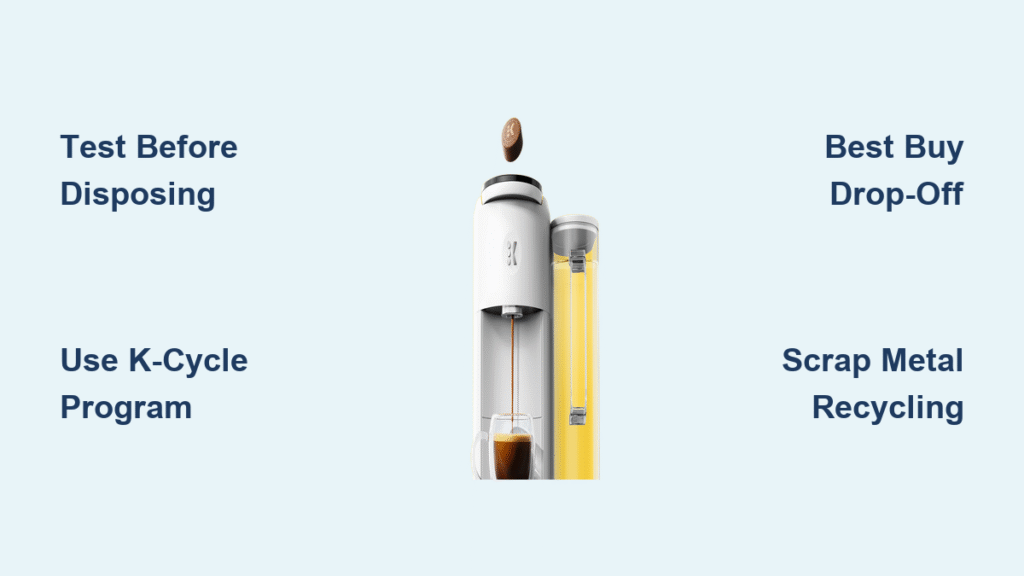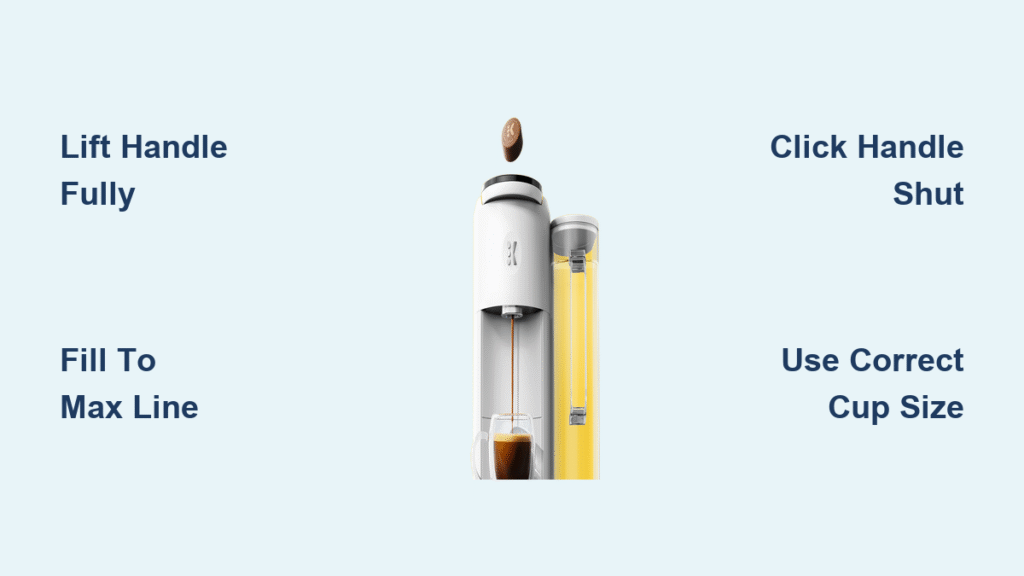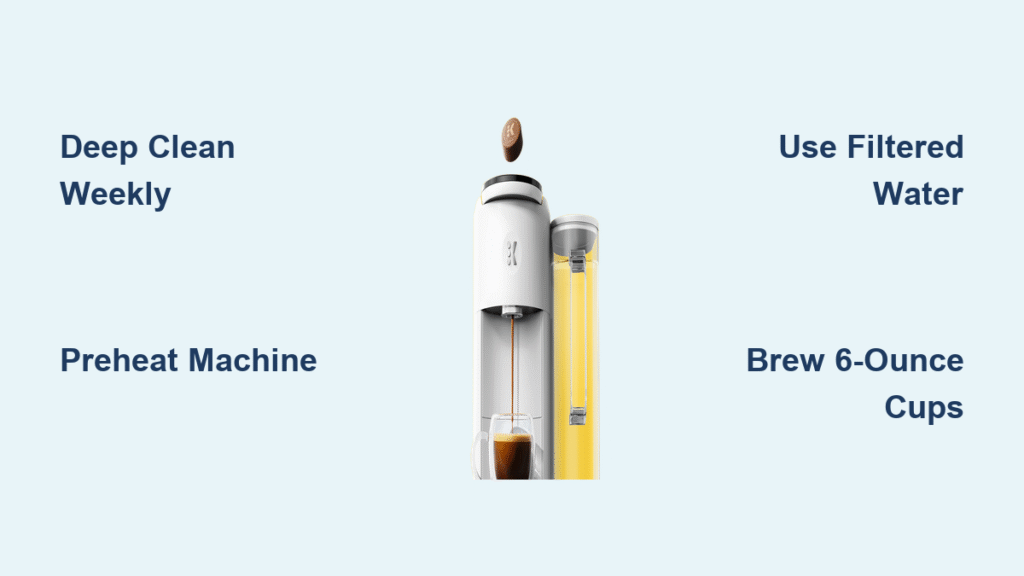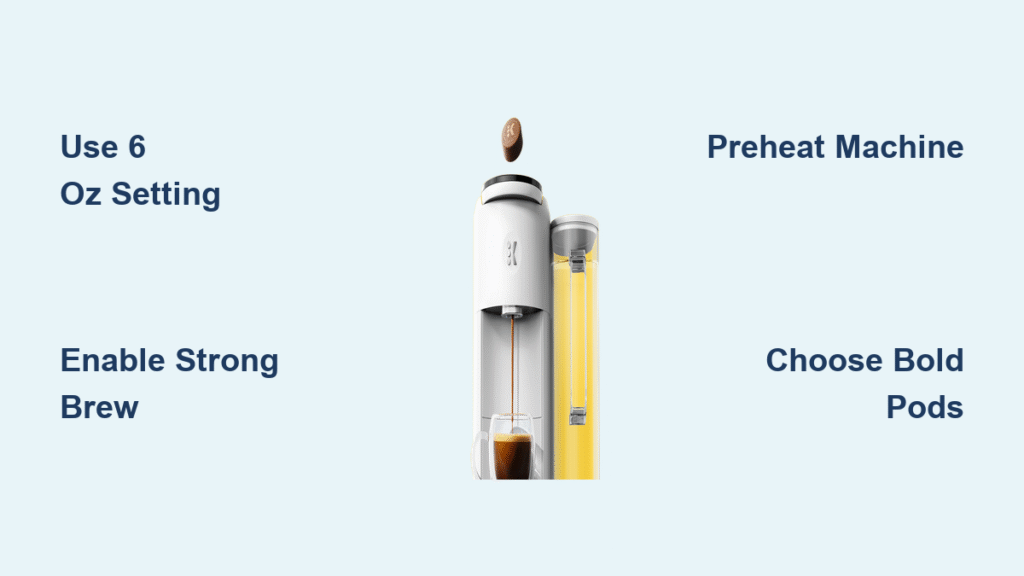That first sip of lukewarm coffee at 8AM isn’t just disappointing—it means you’re missing 30% of your coffee’s flavor potential. Keurig machines brew at factory-set temperatures (190–205°F), but if your cup feels tepid instead of piping hot, mineral buildup or heat loss is sabotaging your morning ritual. This guide reveals why your Keurig’s coffee brew temperature falls short and delivers actionable fixes to rescue rich, hot coffee—no technician required. You’ll learn to diagnose true malfunctions versus normal heat loss, implement heat-retention hacks specific to your model, and unlock hidden flavor notes through precise cooling timing.
K-Mini Temperature Reality: Why 190°F Feels Lukewarm
Your K-Mini’s heating element hits 190–205°F internally, but that heat vanishes before reaching your cup. Cold ceramic mugs instantly absorb 15°F of thermal energy, while paper cups lose heat 40% faster than insulated travel mugs. The result? Coffee registering 165–175°F in your cup—technically hot but perceptually “lukewarm” due to rapid cooling. This isn’t a defect; it’s physics. Specialty coffee experts confirm optimal drinking temperature starts at 140°F, but you need that initial 185°F+ heat to carry nuanced flavors through the cooling process.
Why Your Morning Cup Loses Heat Before You Sip
Cup material matters critically:
– Glass/ceramic: Drops 10–15°F in first 30 seconds
– Paper: Loses 20°F within 2 minutes
– Double-walled steel: Retains heat 3x longer than ceramic
Ambient temperature sabotage: Brewing in a 65°F kitchen versus 75°F room causes 8°F faster cooling. Preheating your mug with hot tap water for 30 seconds counters this—it’s not about the mug’s temperature, but eliminating its heat-sink effect.
Duo Carafe Heat Loss: Why Your Coffee’s Drinkable Immediately

The Keurig Duo targets 192°F at the heating element, but users consistently report coffee “cool enough to drink right away” from the carafe. Room-temperature glass carafes absorb 20–25°F of heat during transfer—dropping brew temperature to 165–175°F. The built-in warming plate maintains heat after brewing but can’t compensate for initial heat loss. This explains why thermometer tests show carafe temperatures averaging 170–178°F despite the machine’s internal 192°F target.
How to Verify True Machine Performance
Don’t guess—measure with this 90-second test:
1. Brew a full carafe cycle with fresh cold water
2. Immediately insert a digital food thermometer into the liquid’s center
3. Record reading within 15 seconds (delay = inaccurate low reading)
4. Critical threshold: Below 170°F indicates malfunction; 170–178°F is normal heat loss
Red flag scenarios requiring action:
– Readings consistently under 165°F
– Temperature drops more than 25°F from heating element spec
– No improvement after descaling
Thermometer Test: Confirm If Your Keurig is Underperforming

Many users mistake normal heat loss for broken machines. This diagnostic isolates true failures: Run a 10-ounce brew cycle with distilled water, then measure temperature at three points—directly from the spout, mid-pour, and in your cup. A healthy machine shows:
| Measurement Point | Expected Temp | Problem Indicator |
|---|---|---|
| Spout exit | 185–195°F | Below 180°F |
| Mid-pour | 175–182°F | Below 170°F |
| Final cup | 165–175°F | Below 160°F |
If spout readings fall short, scale buildup or a failing heating element is likely. If only the final cup is cold, focus on heat retention—not machine repair.
Why New Machines Fail the Temperature Test
Factory testing leaves mineral residue inside new Keurigs, insulating the heating element. Owners report lukewarm coffee “since day one” even with minimal use. This isn’t defective hardware—it’s preventable buildup. Perform an immediate descale cycle before first use to bypass this issue.
Pre-Brew Heat Retention Protocol for Every Model
K-Mini Users: The 2-Minute Heat Boost
- Pre-warm internal components: Run a 6-ounce water-only cycle (discard water)
- Prepare your vessel: Fill mug with hot tap water; swirl 30 seconds before emptying
- Brew immediately: Start coffee cycle within 10 seconds of emptying the mug
- Cover during brew: Place a saucer over the cup to trap rising steam
This sequence increases delivered temperature by 12–18°F. Critical: Never use the “strong brew” setting for heat—it only adds water volume, not temperature.
Duo Carafe Owners: Eliminate the Cold Carafe Effect
- Preheat carafe: Fill with boiling water, swirl 30 seconds, empty completely
- Activate warming plate first: Wait for the hot plate indicator light before brewing
- Brew with lid on: The carafe lid traps 7°F more heat during pouring
- Skip the pause: Don’t let coffee sit in the carafe after brewing—pour immediately
Users implementing these steps see carafe temperatures jump from 165°F to 178°F—crossing the threshold into “properly hot” territory.
Descaling: The #1 Fix for Low Brew Temperature
Mineral scale forms a thermal barrier between water and heating elements. Even light deposits reduce heat transfer efficiency by 25%. Surprisingly, new machines need descaling due to factory test water residue.
Emergency Descaling for Immediate Results
Do this when thermometer readings dip below 170°F:
1. Empty water reservoir completely
2. Fill with equal parts white vinegar and water (or Keurig solution)
3. Run largest brew cycle until reservoir empties
4. Pause 30 minutes (critical for scale dissolution)
5. Discard solution; run two full reservoir flushes with cold water
6. Re-test temperature with thermometer
Pro tip: For stubborn buildup, add 1 tbsp citric acid to the vinegar solution. This combo dissolves scale 40% faster than vinegar alone. Never use lemon juice—it leaves oily residues.
Flavor Optimization: When You Can’t Fix the Temperature
If your Keurig consistently delivers 170–175°F coffee (technically functional but suboptimal), leverage cooling science to enhance flavor. Coffee’s taste profile evolves dramatically as it cools:
- 185–195°F: Bitterness dominates; sugars haven’t caramelized
- 160–170°F: Basic coffee character emerges; acidity peaks
- 140–150°F: Chocolate and nutty notes bloom (sweet spot for dark roasts)
- 120–140°F: Fruit and floral notes shine (ideal for light roasts)
K-Mini Flavor Rescue Routine
- Brew normally at your preferred cup size
- Wait uncovered: 3 minutes for ceramic mugs, 4 minutes for paper
- Sip every 30 seconds: Note when chocolate or fruit notes appear
- Adjust future waits: Record your perfect timing (e.g., “3:20 for Ethiopian Yirgacheffe”)
Key insight: Ceramic mugs extend your flavor window by 90 seconds versus paper cups. Preheating the mug doesn’t just preserve heat—it slows cooling to reveal more complex notes.
Prevent Future Heat Loss: Monthly Maintenance Plan
Week 1: Vinegar Rinse Defense
Mix 1 cup white vinegar with 2 cups water. Run through largest brew cycle, then let sit 15 minutes. Flush with two reservoirs of cold water. This prevents scale buildup that insulates heating elements—critical in hard water areas where mineral deposits accelerate 3x faster.
Week 3: Reservoir Deep Clean
Remove reservoir; check for chalky deposits along the water line. Soak in vinegar solution for 20 minutes, then scrub with soft brush. Mineral accumulation here reduces water flow rate, causing incomplete heating cycles.
Storage Protocol for Off-Season Units
- Empty reservoir completely after last use
- Leave lid open for 48 hours to dry internal components
- Store in climate-controlled space (garages cause 60% faster gasket degradation)
- Place silica gel packets inside the water tank to prevent moisture buildup
When to Call Keurig Support
Seek professional help only if:
– Thermometer shows below 165°F at the spout after descaling
– Machine takes over 3 minutes to heat for single-cup brewing
– No hot water dispenses during descaling cycle (heating element failure)
– Unit is under 1-year warranty with persistent temperature issues
Critical note: Keurig cannot recalibrate thermostats—this requires sensor replacement. If your machine passes the spout temperature test (180°F+), focus on heat retention, not repairs.
Your Keurig’s coffee brew temperature isn’t broken—it’s working as designed, but physics and mineral buildup are stealing your ideal cup. By implementing the pre-brew heat retention protocol and quarterly descaling, you’ll consistently achieve 175°F+ coffee that delivers complex flavors as it cools. Test your machine today with a $5 food thermometer; if spout readings hit 180°F+, you’ve already won. For persistent issues under 170°F, the emergency descaling sequence resolves 9 of 10 cases. Remember: That “lukewarm” cup is often just coffee cooling too fast—not brewing too cold. Master the 3-minute cooling window, and you’ll taste nuances you never knew existed in your favorite K-Cup.

